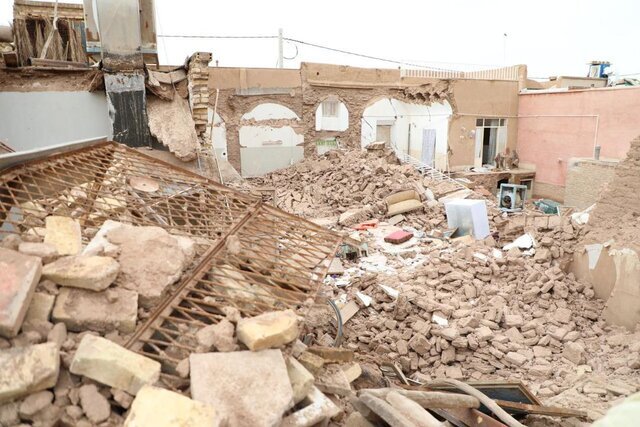Flash floods harm historical houses in Yazd

TEHRAN—A recent flooding has hit aging houses in the historical core of the central city of Yazd, Yazd’s tourism chief has said.
Over 240 historical houses in the 900-hectare historical texture of the city have been damaged completely and partially, ISNA quoted Ahmad Akhundi as saying on Sunday.
Because the historical houses of Yazd are made of thatched roofs, heavy rains caused water infiltration into the structures, destroying the tourist complexes and traditional and old homes, the official explained.
On Saturday, Cultural Heritage, Tourism, and Handicrafts Minister Ezzatollah Zarghami promised to facilitate the restoration of the damaged parts of the historical texture of Yazd after the recent flash floods.
He also stressed the importance of the health of Yazd’s residents and tourists, as well as the restoration of the historical texture of the city, through the appointment of a special representative who will investigate the damages and provide funds for the reconstruction of the damaged portions of the city.
During the last few days, flash flooding in 17 provinces of the country claimed 32 lives and left 25 people missing.
The provinces include Sistan-Baluchestan, Tehran, Fars, Kerman, Hormozgan, Qom, Semnan, Mazandaran, Yazd, East Azarbaijan, South Khorasan, Golestan, Isfahan, Bushehr, Kohgiluyeh-Boyer Ahmad, Markazi, and Chaharmahal-Bakhtiari.
In July 2017, the historical core of Yazd was named a UNESCO World Heritage. Yazd is regularly referred to as a delightful place to stay, or a “don’t miss” destination by almost all of its visitors. The city is full of mudbrick houses that are equipped with innovative badgirs (wind catchers), atmospheric alleyways, and many Islamic and Iranian monuments that shape its eye-catching city landscape.
Cultural heritage experts believe that Yazd is a living testimony to the intelligent use of limited available resources in the desert for survival. Water is brought to the city by the qanat system. Each district of the city is built on a qanat and has a communal center. Furthermore, the use of earth in buildings includes walls and roofs through the construction of vaults and domes. Houses are built with courtyards below ground level, serving underground areas. Wind-catchers, courtyards, and thick earthen walls create a pleasant microclimate.
The historical core of Yazd is chock-full of mudbrick houses, bazaars, public bathhouses, water cisterns, mosques, synagogues, Zoroastrian temples, and centuries-old gardens. From the divine point of view, the city enjoys the peaceful coexistence of three religions: Islam, Judaism, and Zoroastrianism.
Yazd is home to numerous qanats which have supplied water to agricultural and permanent settlements for thousands of years. The man-carved underground qanat system relies on snow-fed streams flowing down the foothills of surrounding mountains. The earliest water supply to Yazd is estimated to date from the Sassanid era (224 to 651 CE). However, many others have been continually repaired and used over time, and most surviving Ab-Anbars (traditional mudbrick cisterns) can be today traced to the late Safavid and Qajar periods.
Yazd Water Museum is a must-see destination for the ones interested to know about the brave men who built such underground aqueducts in the past. Located in a restored mansion with a visible qanat running underneath, the museum offers its visitors a fascinating glimpse into the hidden world of qanats through a series of photographs, exhibits, and architectural drawings. It represents nearly 2000 years of unique irrigation structure that has been in operation, yet describes the drilling of mother wells and associated underground water networks stretched to the ancient city.
ABU/AFM
Leave a Comment